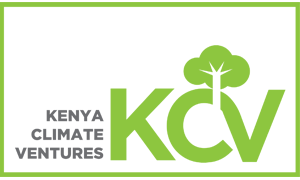Women living in rural regions in East Africa, in countries such as Kenya are equipped for innovating solutions regarding seasonal impacts of climate change: “women in Africa have been among the first to notice the impact of climate change and its effect on the agricultural cycle, human and animal life; food production and food security” (Steady, 2014).
Women were able to identify the physical consequences of climate change quite efficiently. Their responsibilities within their communities and their own households give them exposure to these impacts firsthand. Even “rainfall patterns were perceived by the women farmers to be increasingly erratic, and perceptions of average temperatures were that they are increasing” (Lawson, E.T., Alare, R.S., Salifu & A.R.Z., 2020). For example, in Uganda in the Kagera Basin region, women would share their harvest among one another, and create a rotating system of buying seeds for one another to “increase the collective seed pool, while adding some cash to the households” (Perez, Jones, Kristjanson, Cramer, Thornton, Forch & Barahona, 2014).
Like these women in Kagera Basin, Uganda others are able to and adapt to the impacts of climate change with innovative solutions. However, often times these innovative ideas are not always heard or implemented. This is mainly due to the lack of capital or land that women owned, as this was a significant aspect of their lack of decision-making capabilities. Often, women are in labor-oriented roles, while their male counterparts owned land, shelter, and even livestock. This lack of power extends to the distribution of resources in their communities, as most products are received by men from each household rather than women. “In Tanzania, the Ministry of Health distributes ivermectin tablets to men to control river blindness (onchocerciasis), even if women are the ones that manage the medicine.” (Perez, Jones, Kristjanson, Cramer, Thornton, Forch & Barahona, 2014).
Due to their heavy involvement in labor, lack of ownership capabilities and voice regarding what should be altered in farmlands, innovative attempts by women residing in rural regions of Eastern Africa have implementation barriers. However, there have been attempts for change, as organizations such as Kenya Climate Ventures aims to provide sustainable technologies and options for households in rural regions in Kenya; and continuously promotes the idea of collaboration and support for local communities.
Steady, Filomina Chioma. “Women, Climate Change and Liberation in Africa.” Race, Gender & Class, vol. 21, no. 1/2, Jean Ait Belkhir, Race, Gender & Class Journal, 2014, pp. 312–33, http://www.jstor.org/stable/43496976.
Perez C, Jones E, Kristjanson P, Cramer L, Thornton P, Förch W, Barahona C. 2014. “How resilient are farming households, communities, men and women to a changing climate in Africa?” CCAFS Working Paper no. 80. Copenhagen, Denmark: CGIAR Research Program on Climate Change, Agriculture and Food Security (CCAFS)
By Christiane Amare Lemma












